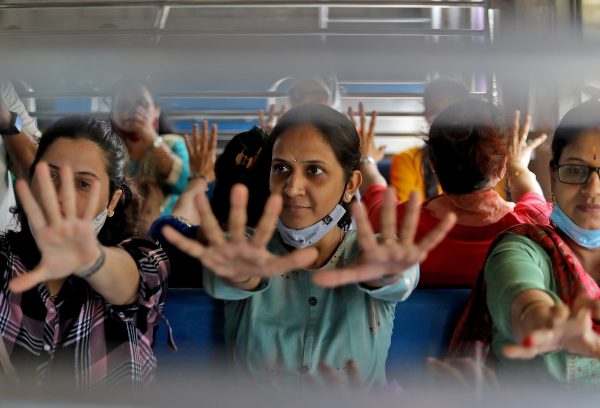India ranks 148 out of 193 countries in the number of elected female representatives in parliament, with Afghanistan ranking 71st, Bangladesh 111th, Bhutan 145th, Nepal 47th and Pakistan 116th. While the global average for female representation in lower chambers or unicamerals is 25.8 per cent, India stands at 14.4 per cent. The 78 (out of 543 members) women elected to the lower chamber elected in 2019 is India’s highest proportion to date.
Women make up 11.2 per cent, or 27 out of 241 members, of the upper chamber. But despite those dismal figures, the debate over the Bill has not featured prominently in national political discourse barring occasions like International Women’s Day.
First introduced in 1996, the Bill aimed to reserve 33 per cent of state assembly and parliamentary seats for women. It also proposed allocating one third of the seats reserved for Scheduled Castes and Scheduled Tribes in the lower chamber, Lok Sabha, and state assemblies, to women. The reserved seats would be allocated to different constituencies in Lok Sabha by rotation.
The Bill was inspired by the 73rd and 74th constitutional amendments in 1993. These amendments mandated that no less than one third of the total seats in local bodies be reserved for women. The Bill faced widespread opposition, with critics claiming it diverted attention from more pressing electoral reforms. Others argued it would reduce the incentive for MPs deemed ineligible for re-election to do constituency work. Some even questioned the merit of women merit entering through the seat reservation system.
The Indian Constitution guarantees men and women equal ability to participate in elections. Gender-balanced cabinets are a crucial indicator of the commitment to achieving gender equality. There are also instrumental gains to be achieved through greater representation of women in decision making positions.
The positive effect of female representation in local bodies can be seen across different domains.
First, the gender gap in villages with leadership positions reserved for women was found to be smaller than in villages without seat reservations. Second, female political representation correlates positively with female reporting of crime. Third, villages with female leaders tend to receive greater investment in drinking water. Fourth, female presidents of village councils enable other women to secure greater property rights progress that is key to reducing gender inequality in Indian land ownership.
But the positive impact of female political participation is not limited to villages. A United Nations University study found that female legislators raised the annual economic performance of their constituencies by 1.8 percentage points more than their male counterparts. The same study suggested that women legislators are less likely to exploit office for personal gain than their male counterparts.
Female representation in state legislatures has also been associated with a reduction in neonatal mortality, suggesting that female political representation is an underutilised tool for addressing health problems.
Despite the positive effects of female political representation, a lack of political will has made it difficult to pass the Bill after first being introduced in 1996. It was reintroduced in 1998, 1999 and 2008, but despite passing the upper house in 2010, it was never voted on in the lower house .The Bill finally lapsed following the dissolution of the lower house in 2014.
During the rule of the United Progressive Alliance, the Bharatiya Janata Party (BJP) opposition frequently accused the ruling Indian National Congress of getting cold feet over passing the Bill. But the tables have turned under the rule of the BJP, as they have fared no better in sponsoring gender equality.
Current female representation in state assemblies is similarly poor, with the proportion of female candidates increasing by five to ten per cent in the last three decades. At this rate, there is still a long road ahead for equal representation in India’s legislative bodies
The continued under representation of women, arising from severe discrimination against women in politics, is a reprehensible state of affairs for the world’s largest democracy. The lack of consensus among political parties regarding the contents of the Bill has hindered its passing, while the inadequate representation and participation of women casts doubt on the legitimacy of the policymaking process.
Reserving enough parliamentary seats for women is necessary for India to achieve proper political representation and live up to the full spirit of democracy. While a seat reservation system is no panacea for the deeply rooted gender discrimination in Indian society, passing the Women’s Reservation Bill is still a step towards achieving gender equality.
Niharika Rustagi is a Doctoral Candidate at the Lee Kuan Yew School Of Public Policy, National University of Singapore.

